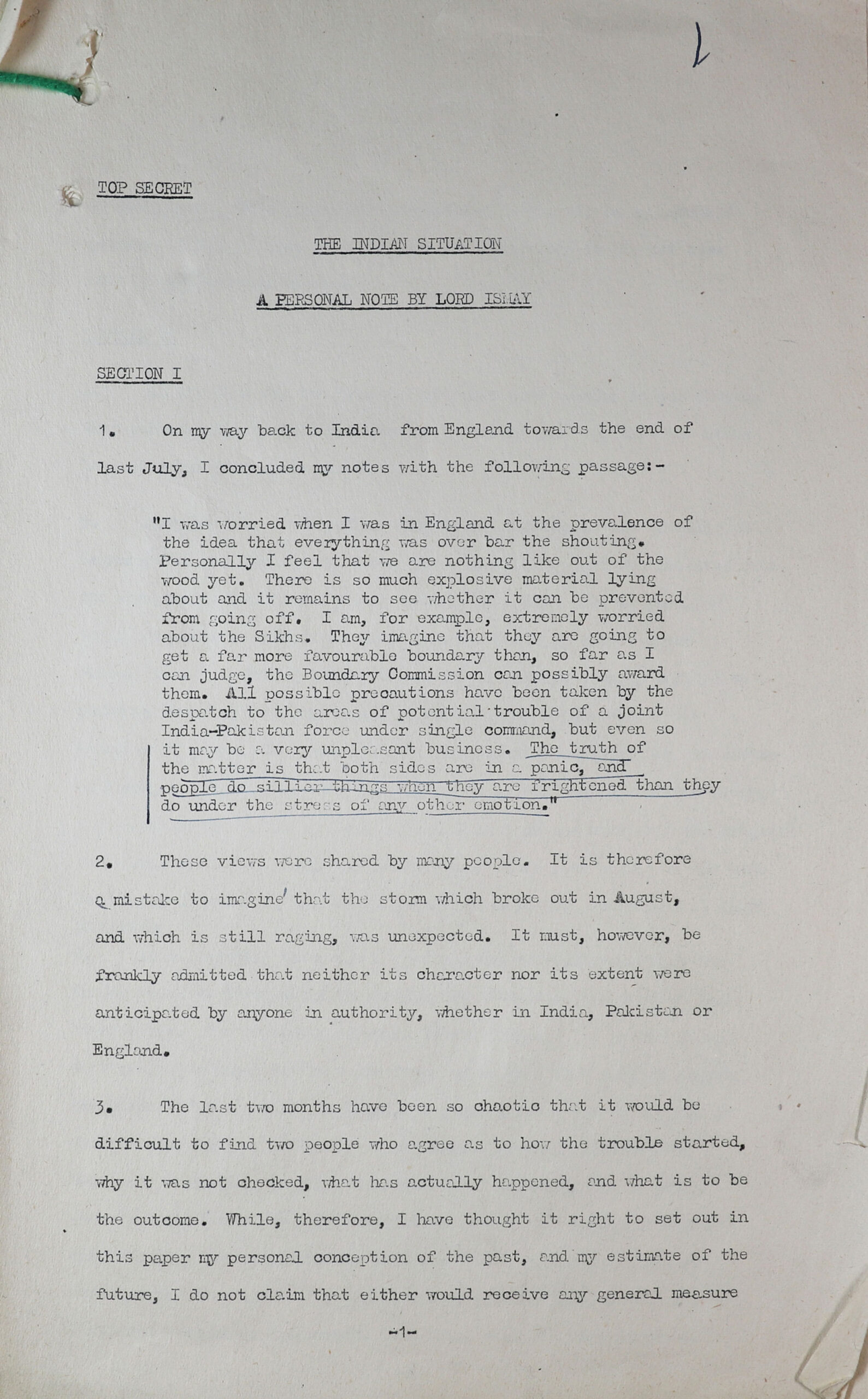Lord Ismay Notice Regarding Indian Partition

Annotation
The Partition of India was one of the most difficult, tension-filled political events of the twentieth century, causing millions of people to migrate within the Indian subcontinent and be killed due to resulting violence. After World War II, the British government could no longer afford to maintain its colonial possessions. The Indian independence movement had been in full swing since the 1920s, and it now was coming to fruition. However, independence was complicated by a movement for an independent Muslim state, which would become Pakistan. Indian Muslims were a significant minority, and they worried that they would be powerless in a representational democracy, creating risks to their civil rights. The India-Pakistan debate would grow throughout the 1940s, and by 1947 compromise had become impossible. Partition, managed by the British colonial government, commenced throughout 1947, and the independent states of India and Pakistan were created on August 14, 1947.
The main difficulty of Partition was handling the Punjab region. Punjab was the homeland of the Sikh religion but also had significant populations of Muslims and Hindus. Unlike other regions of India, there was no clear Muslim or Hindu majority, making it unsure of which new state it should belong to. The British solution was to divide Punjab (roughly) down the middle (the west becoming part of Pakistan and the east belonging to India), effectively making it ground zero for partition-driven migration. Because the India-Pakistan division was drawn along religious lines, tensions were high, and violence erupted.
This notice was written by Lord Ismay, the Chief of Staff to Lord Mountbatten. Mountbatten was the last Viceroy of India and oversaw Partition.
Transcription
TOP SECRET
THE INDIAN SITUATION
A PERSONAL NOTE BY LORD ISMAY
SECTION I
- On my way back to India from England towards the end of last July, I concluded my notes with the following passage:-
“I was worried when I was in England at the prevalence of the idea that everything was over bar the shouting. Personally I feel that we are nothing like out of the wood yet. There is so much explosive material lying about and it remains to see whether it can be prevented from going off. I am, for example, extremely worried about the Sikhs. They imagine that they are going to get a far more favourable boundary then, so far as I can judge, the Boundary Commission can possible award them. All possible precautions have been taken by the despatch to the areas of potential trouble of a joint India-Pakistan force under single command, but even so it may be a very unpleasant business. The truth of the matter is that both sides are in panic, and people do sillier things when they are frightened than they do under the stress of any other emotion.”
- These views were shared by many people. It is therefore a mistake to imagine that the storm which broke out in August, and which is still raging, was unexpected. It must, however, by frankly admitted that neither its character nor its extent were anticipated by anyone in authority, whether in India, Pakistan or England.
- The last two months have been so chaotic that it would be difficult to find two people who agree as to how the trouble started, why it was not checked, what has actually happened, and what is to be the outcome. While, therefore, I have thought it right to set out in this paper my personal conception of the past, and my estimate of the future, I do not claim that either would receive any general measure
*transcript by the British National Archives*
Credits
Annotated by Savannah Scott, George Mason University
Source accessed here: https://www.nationalarchives.gov.uk/education/resources/partition-of-british-india/source-1b/